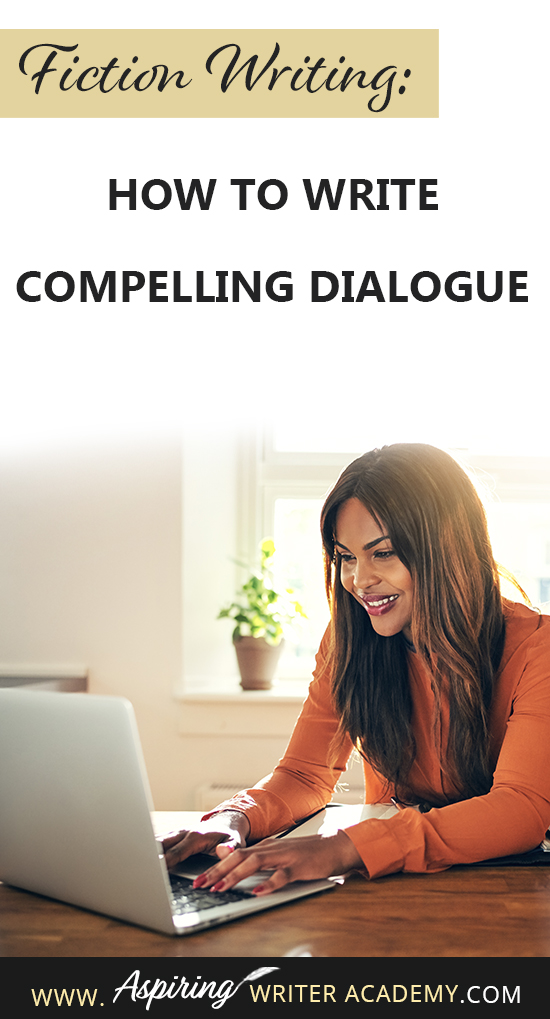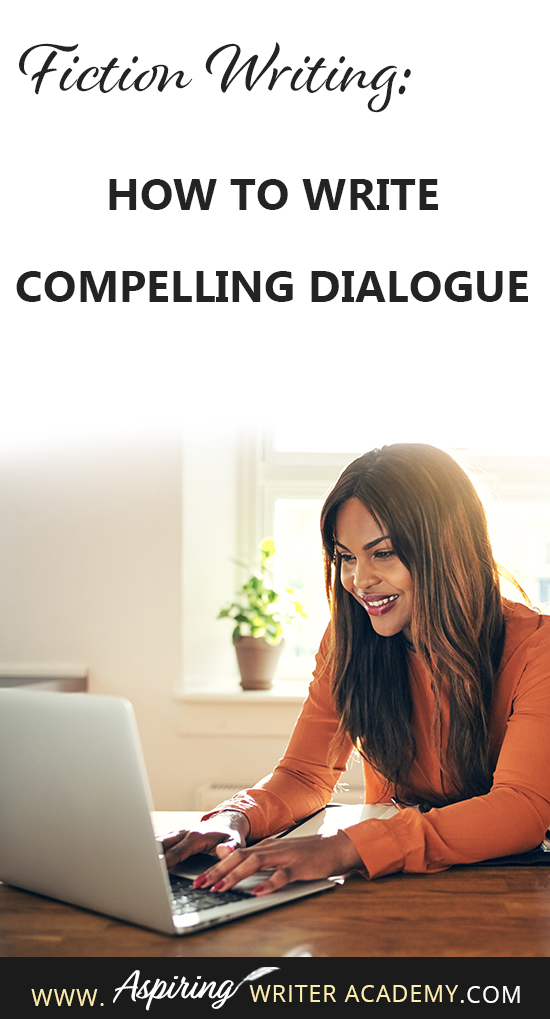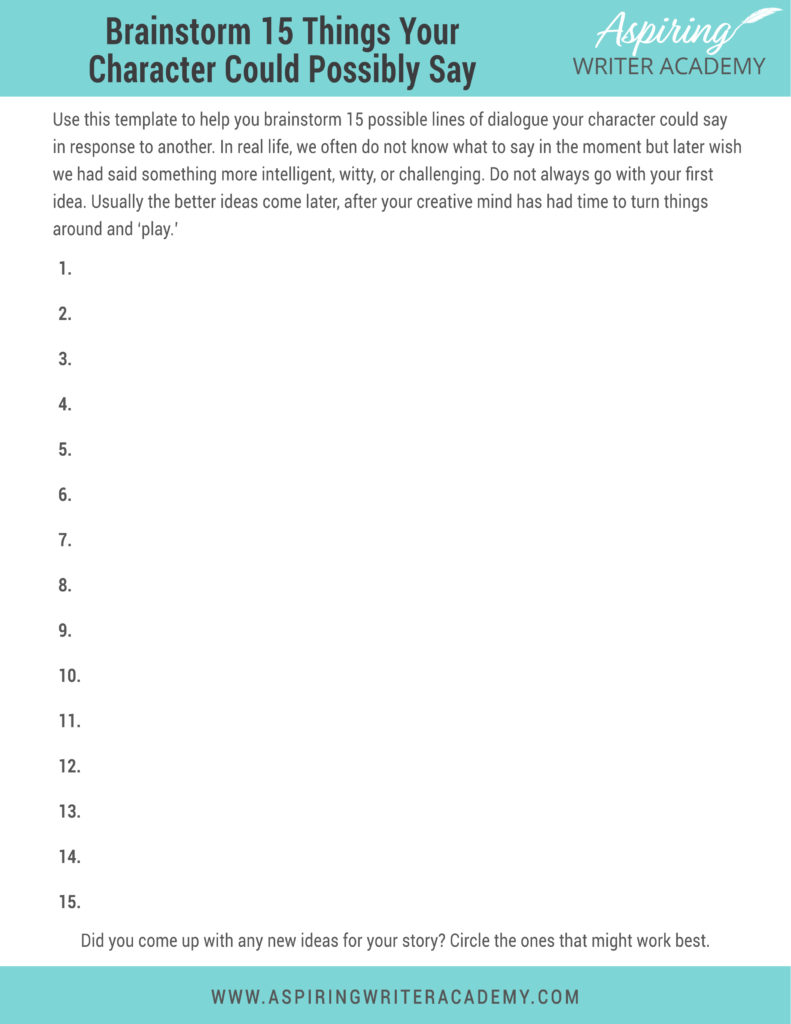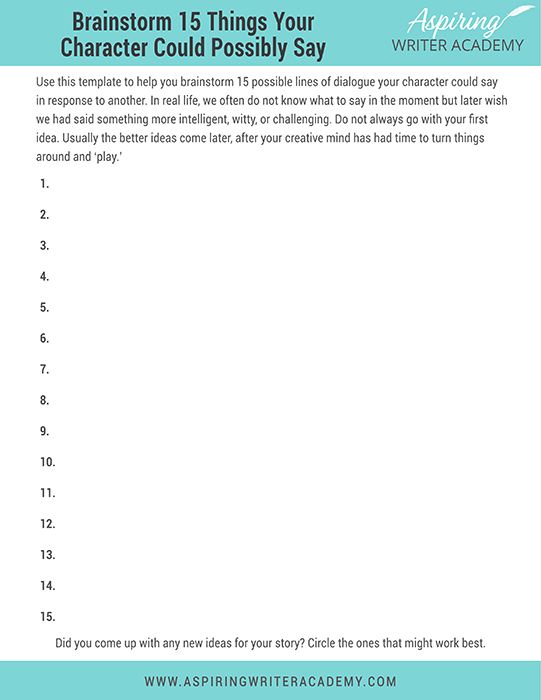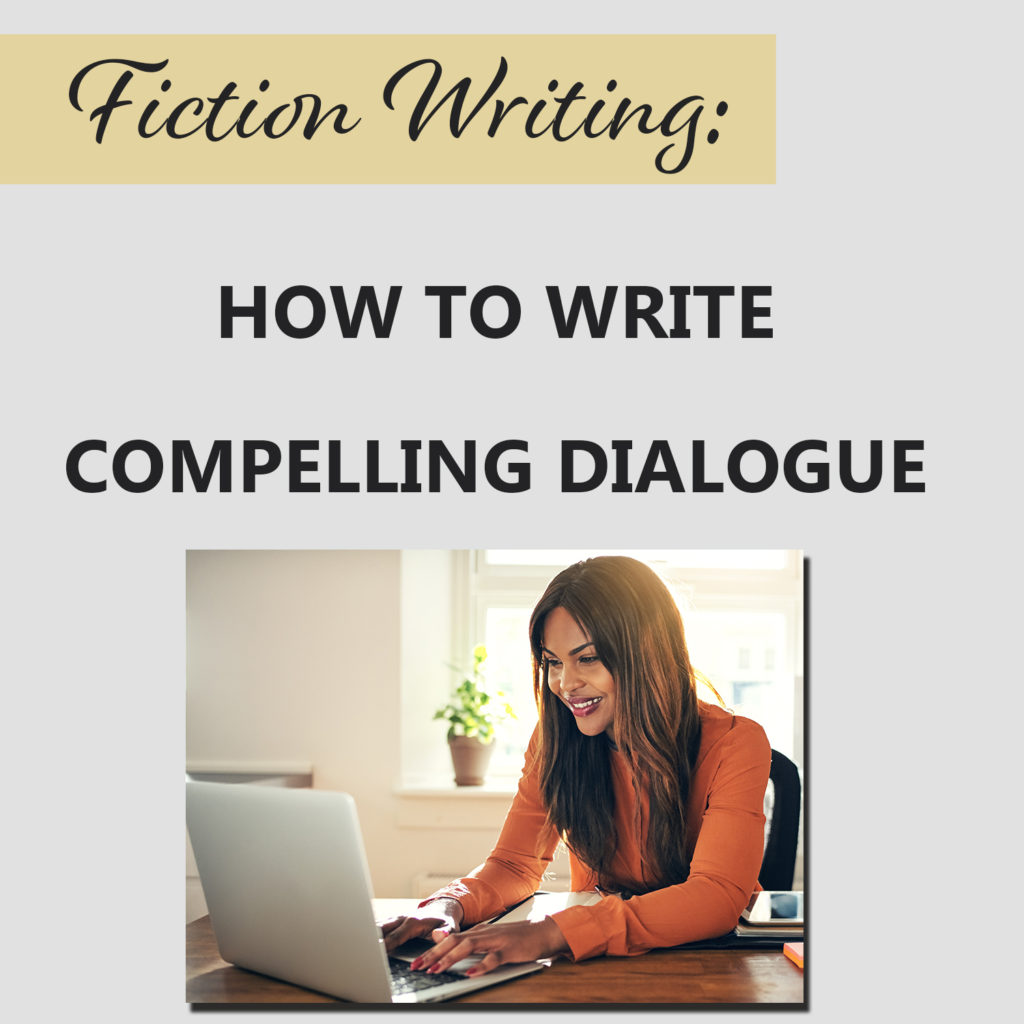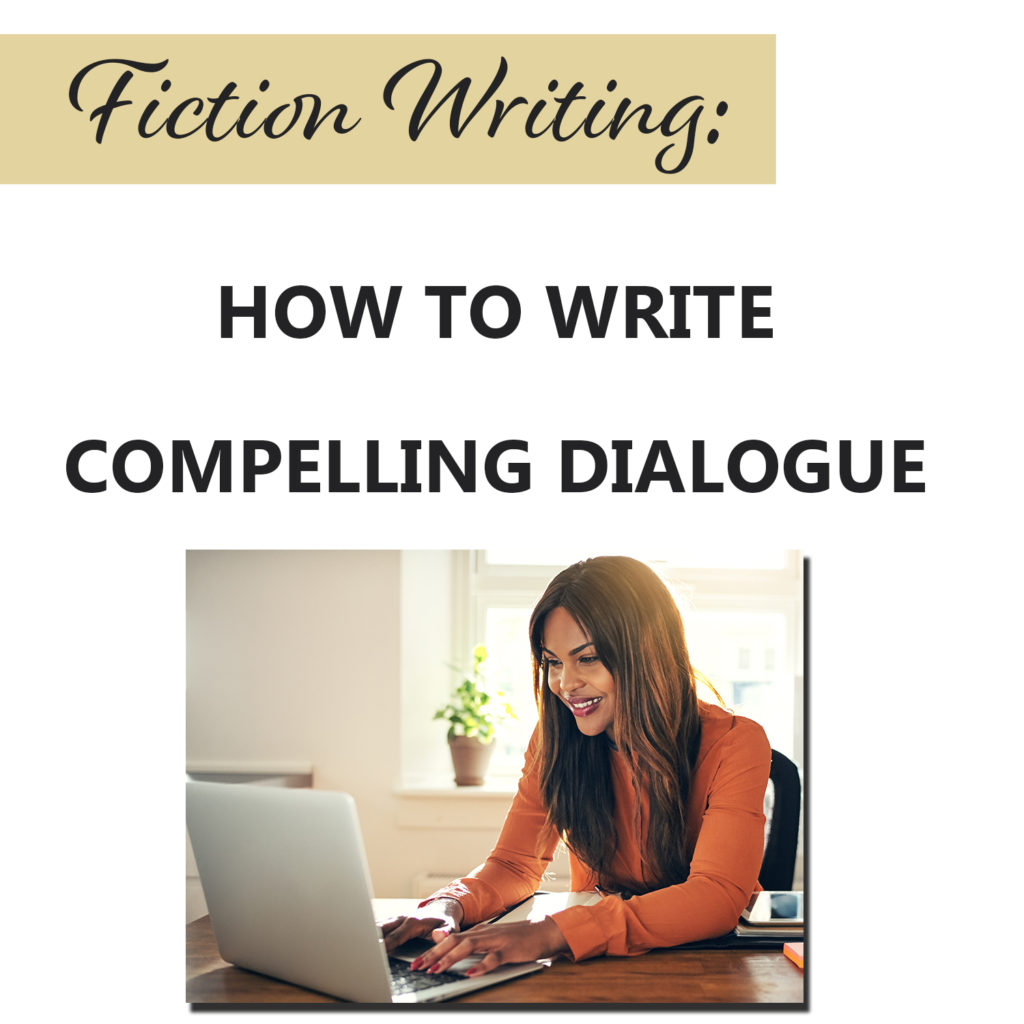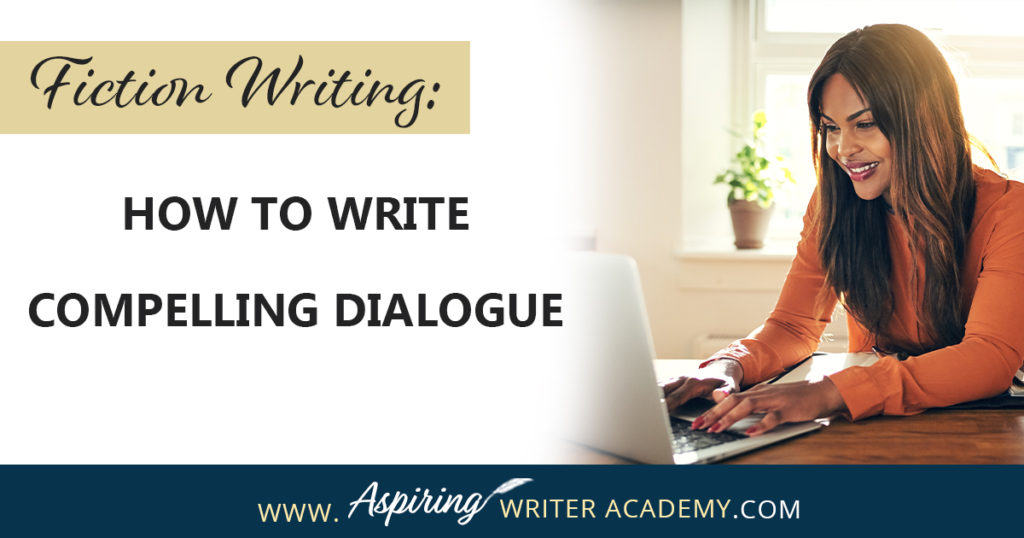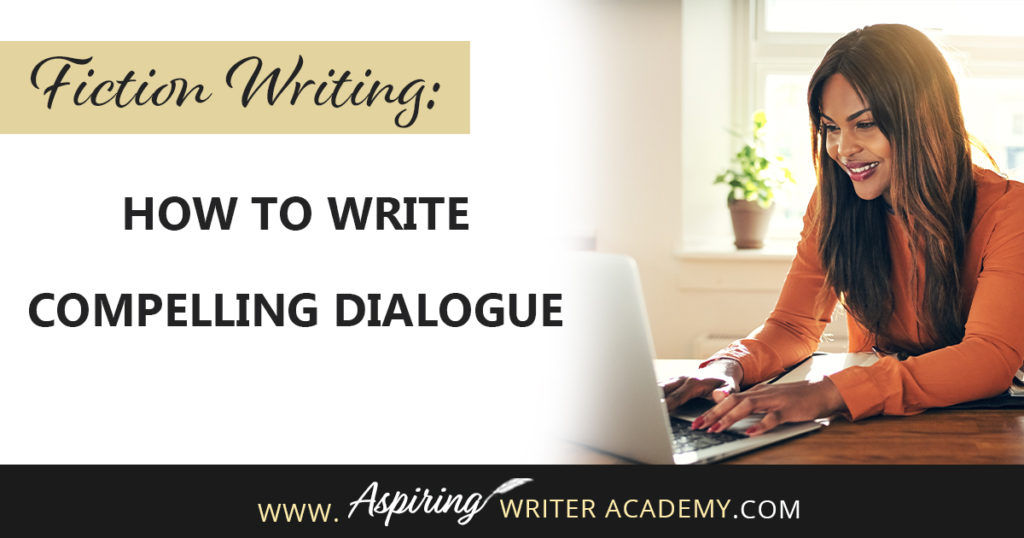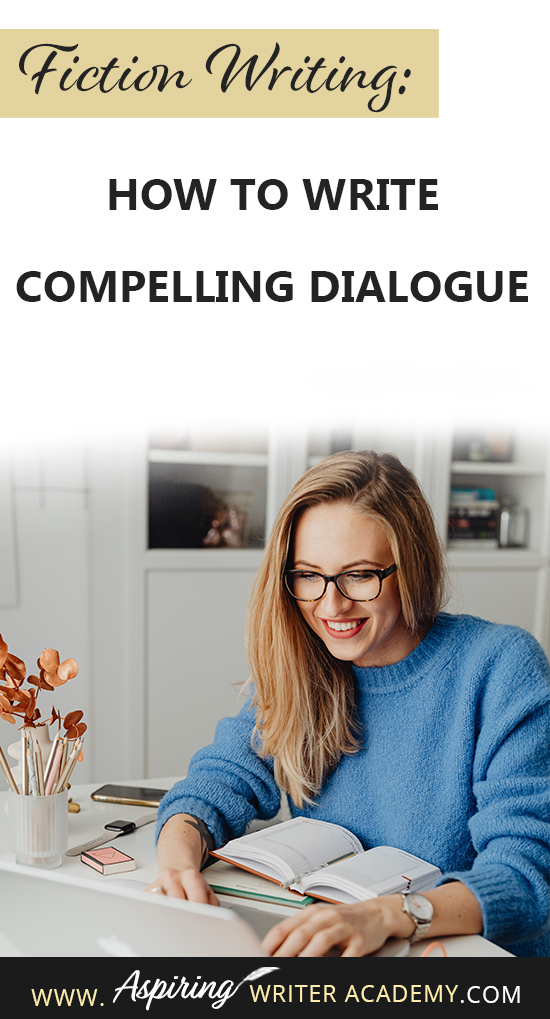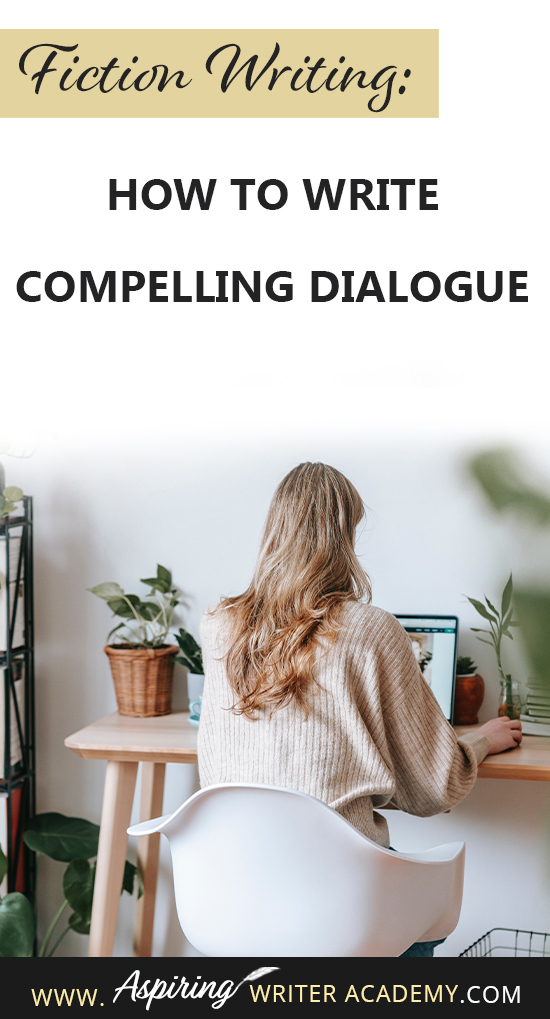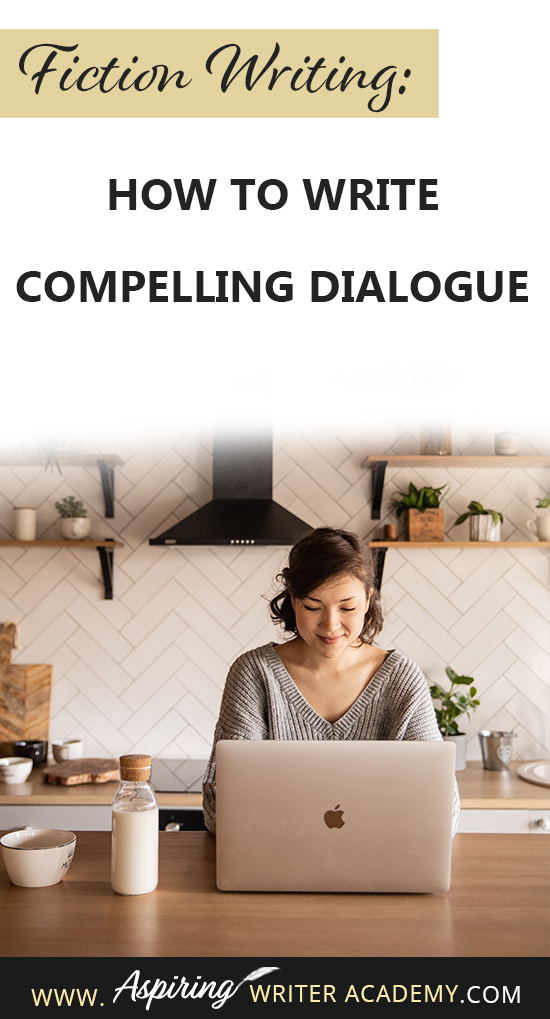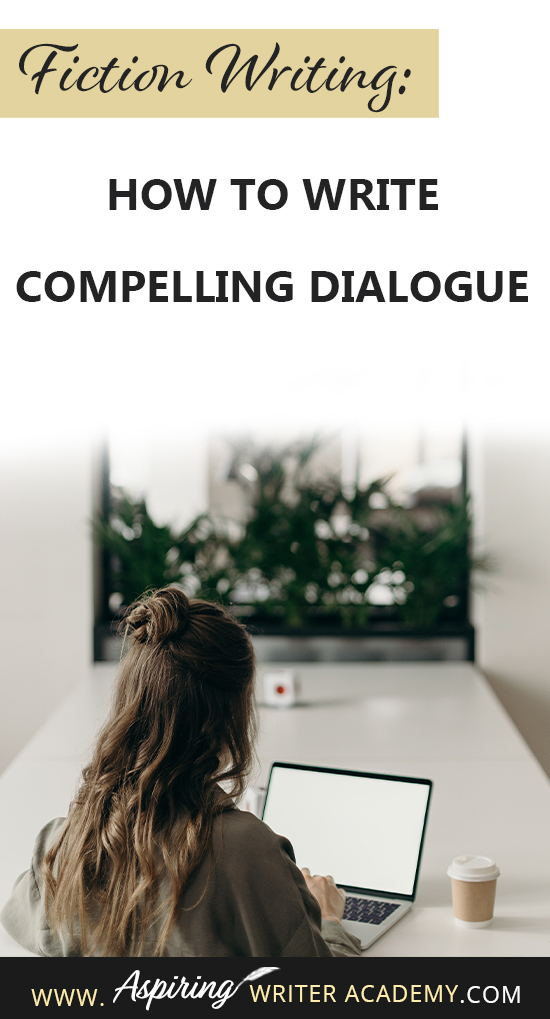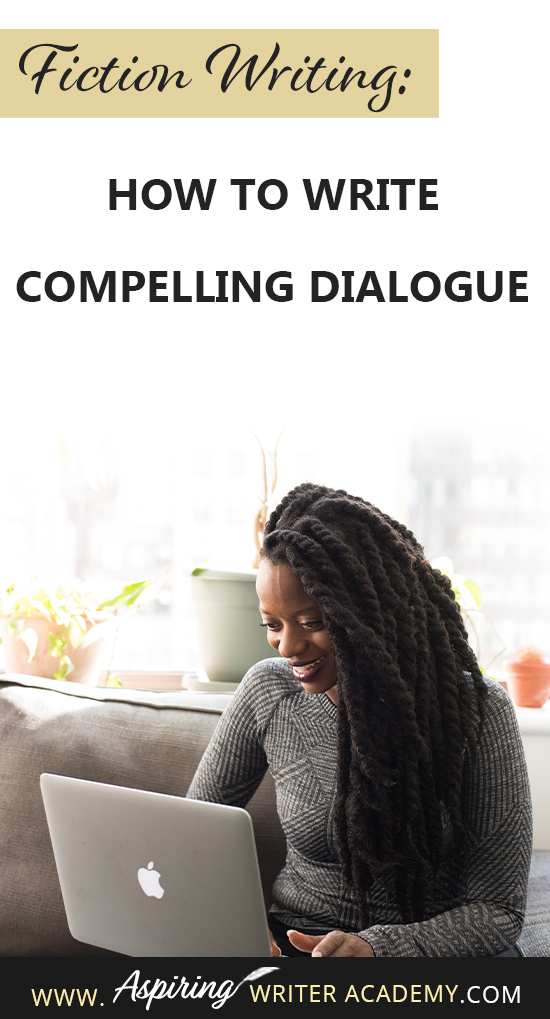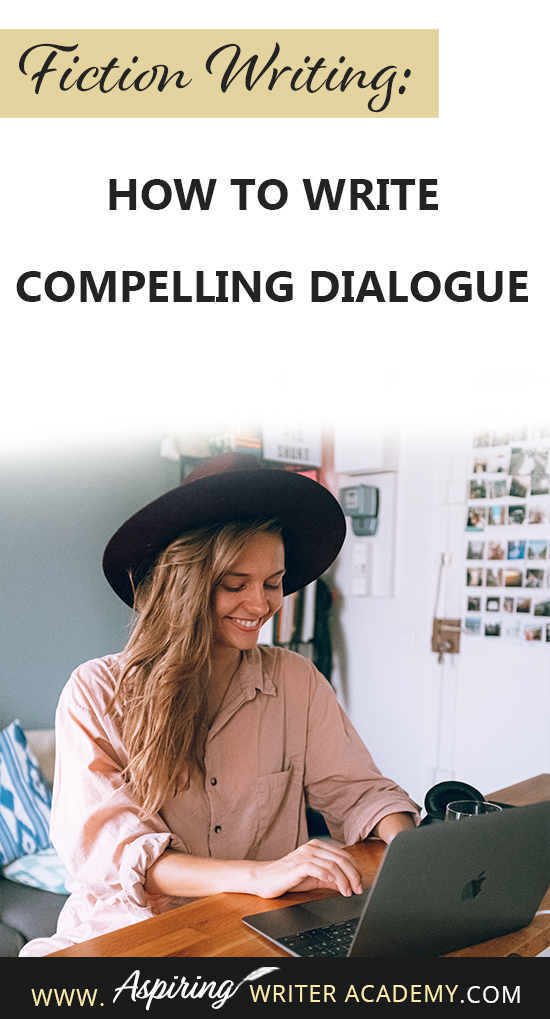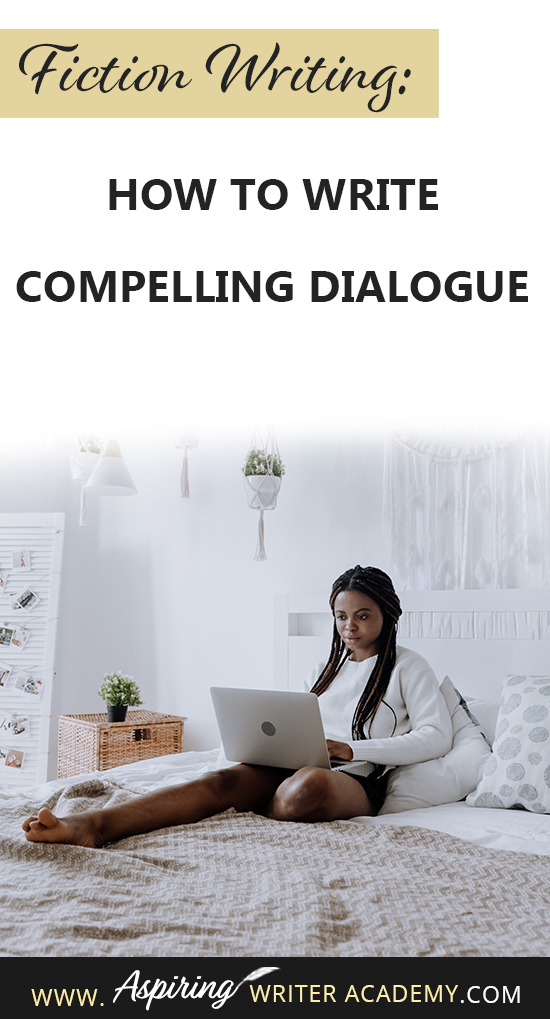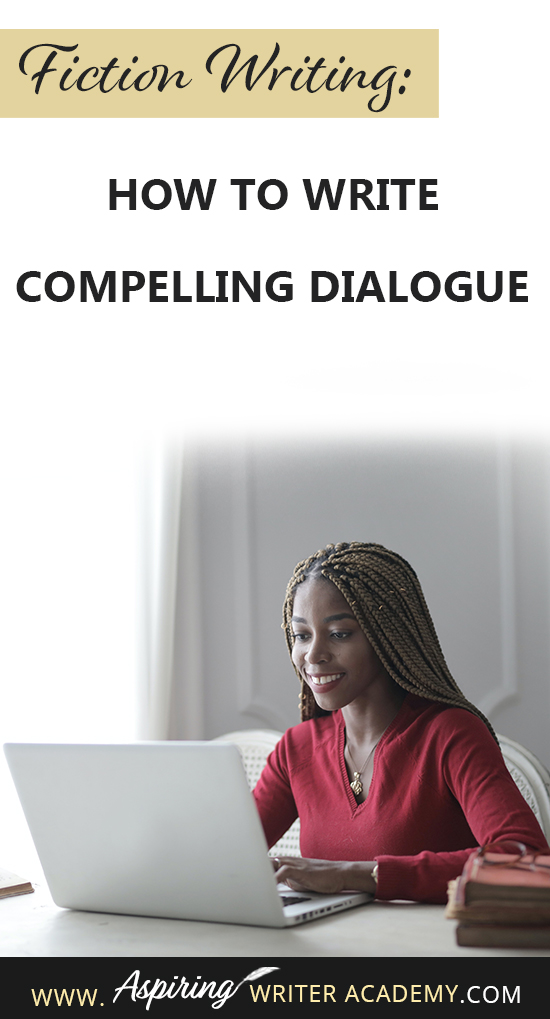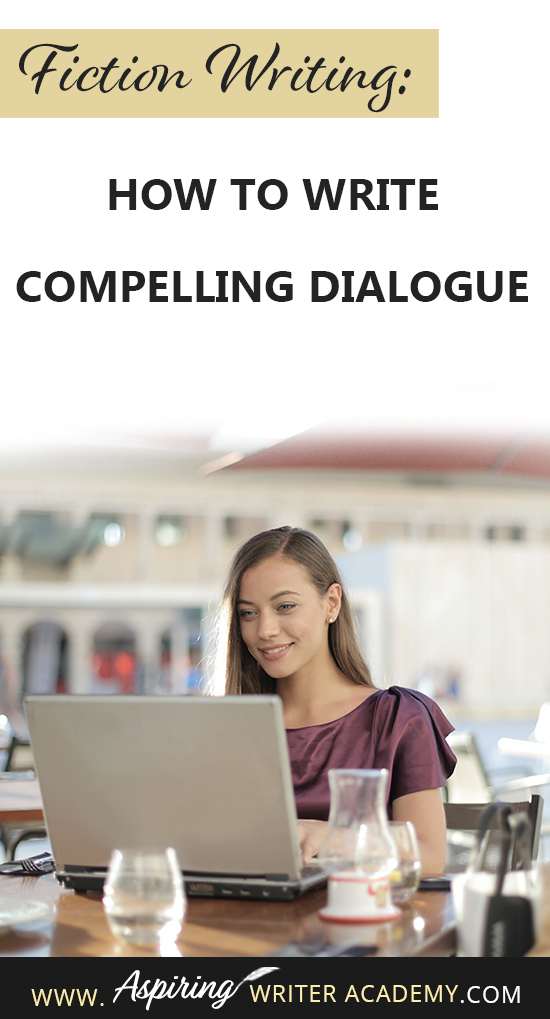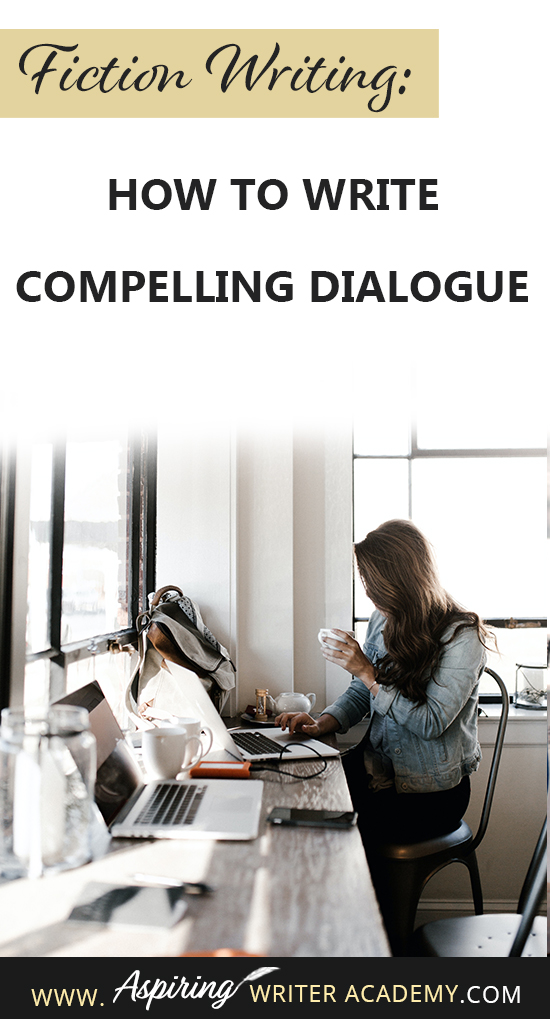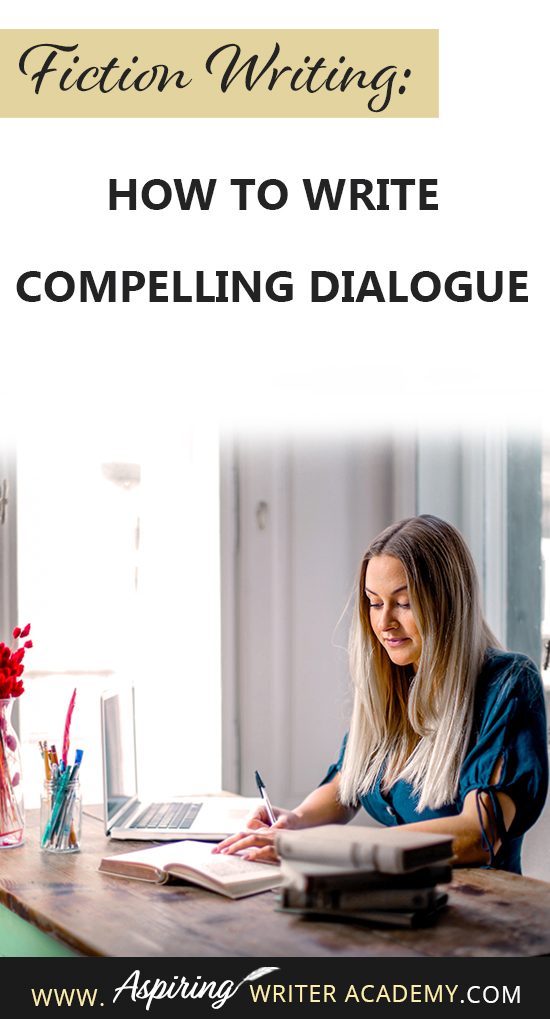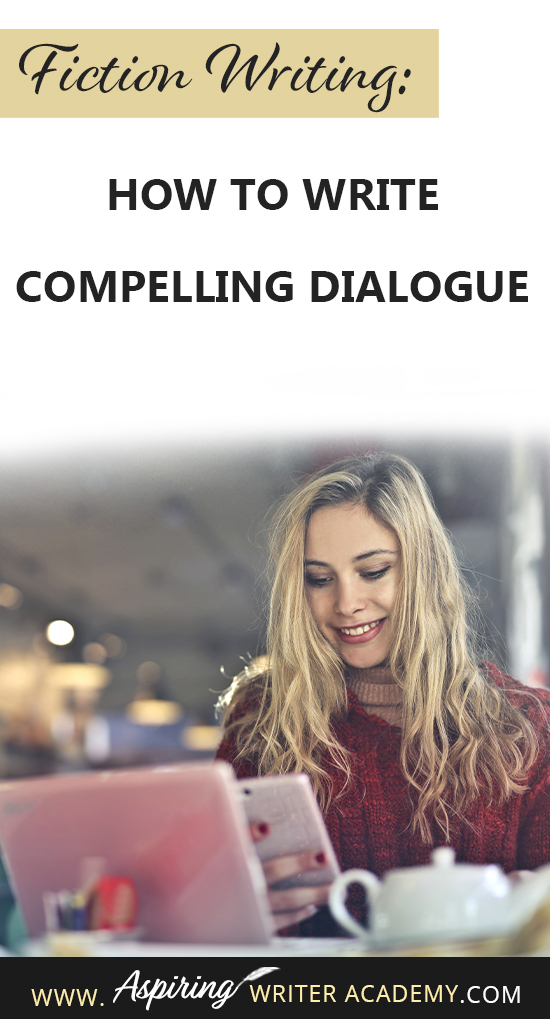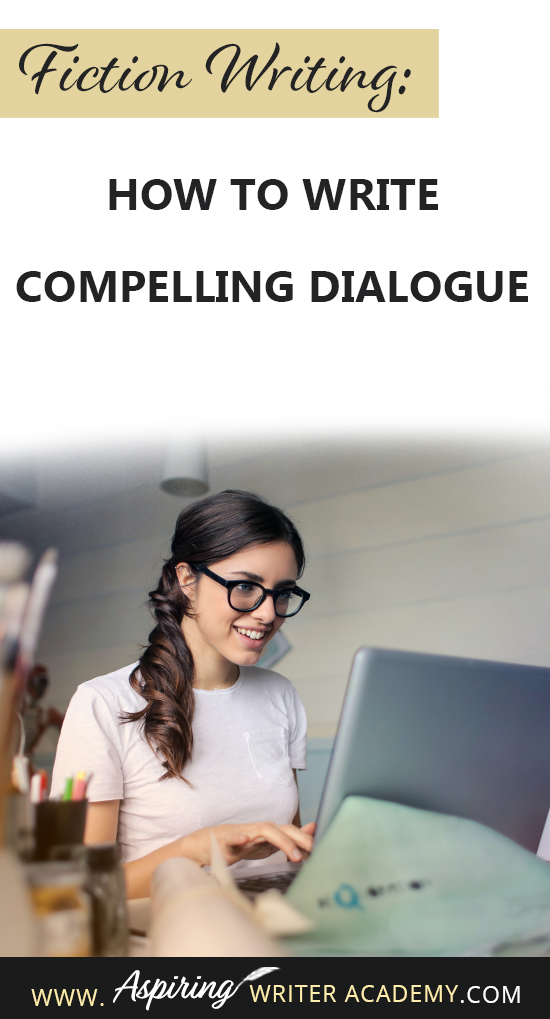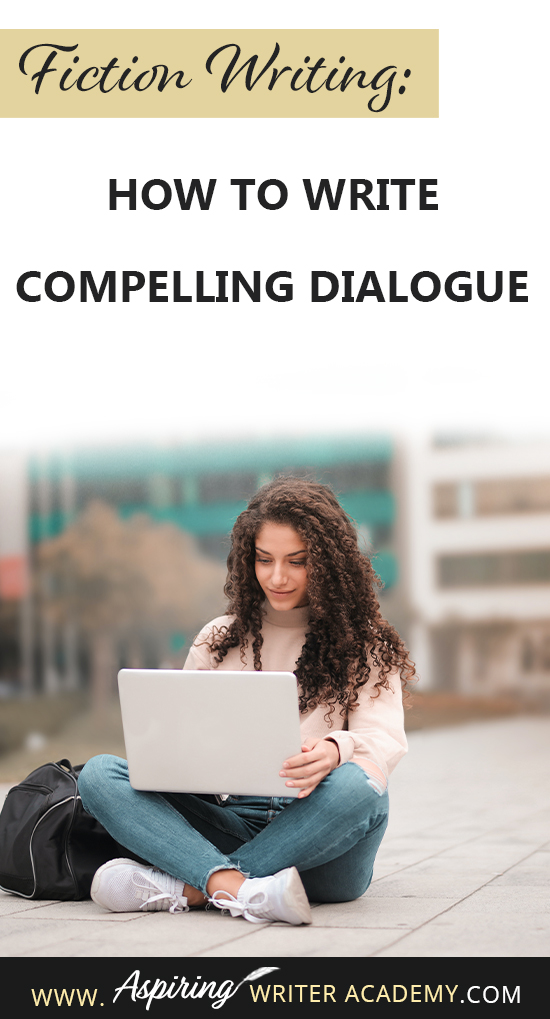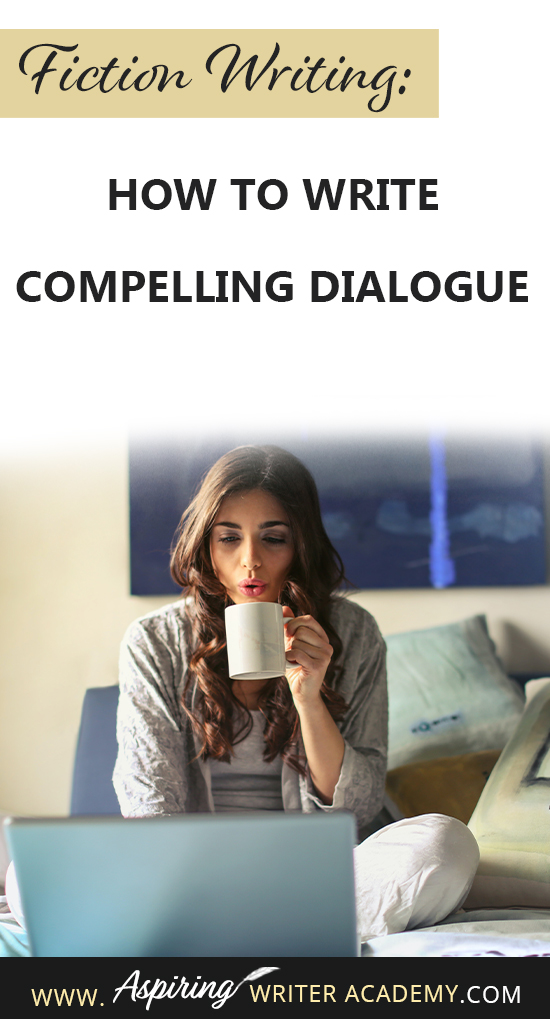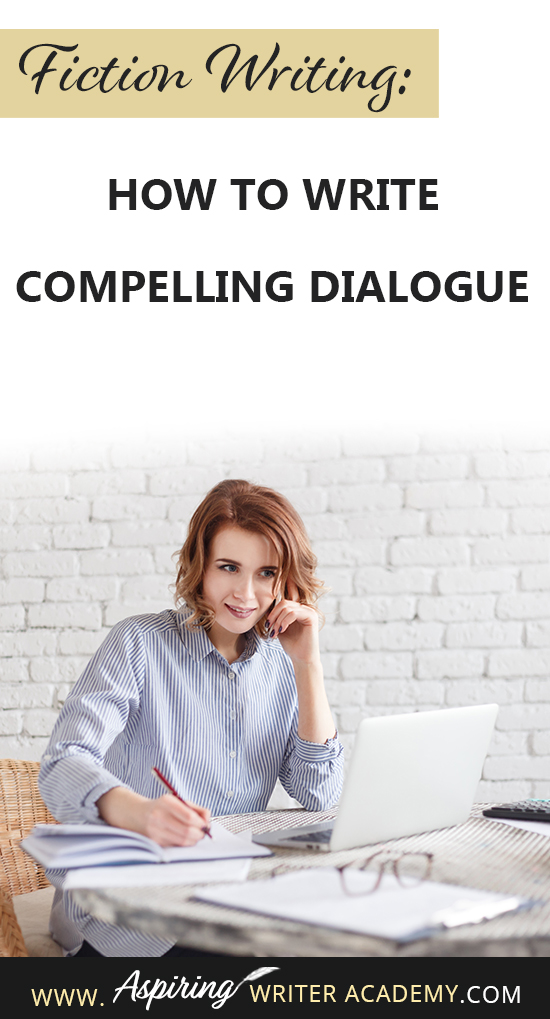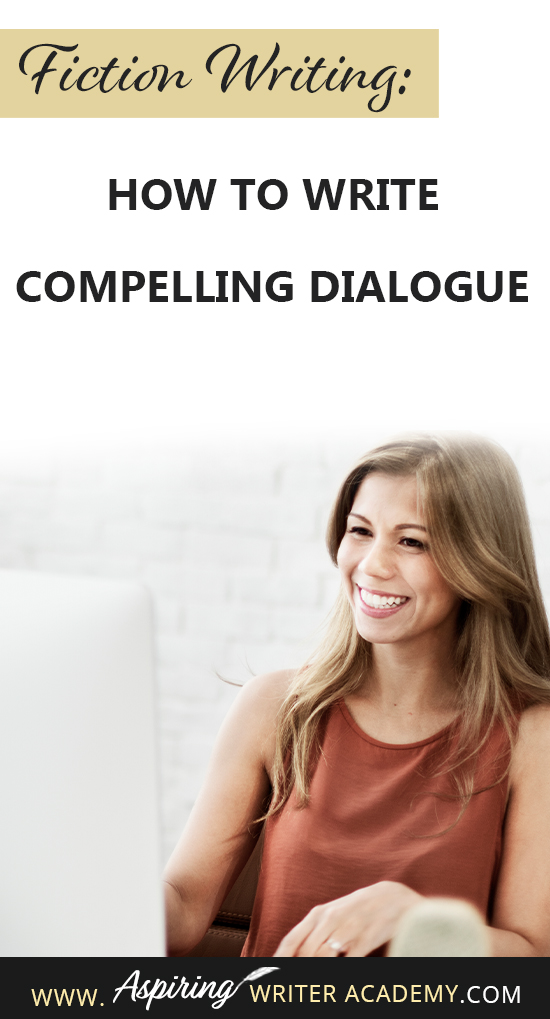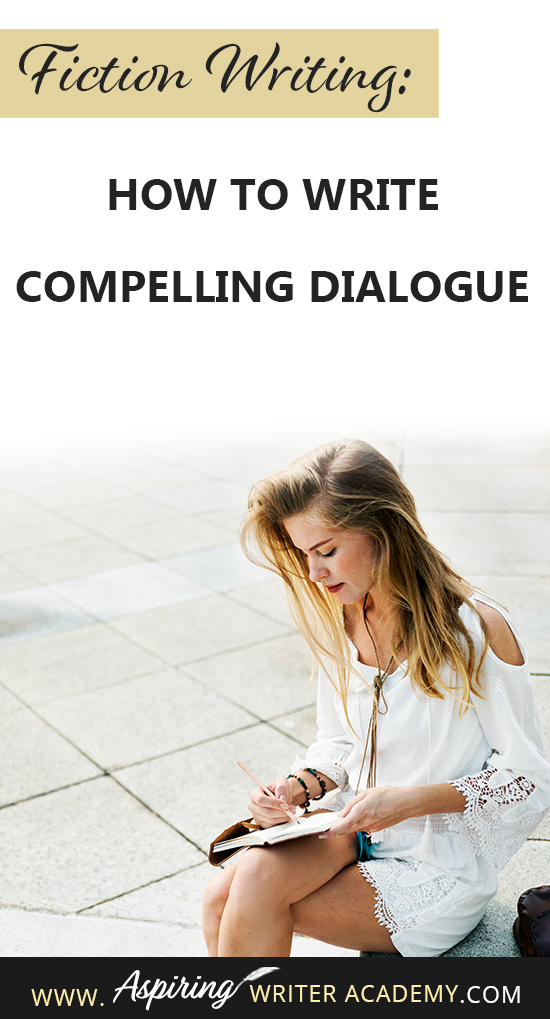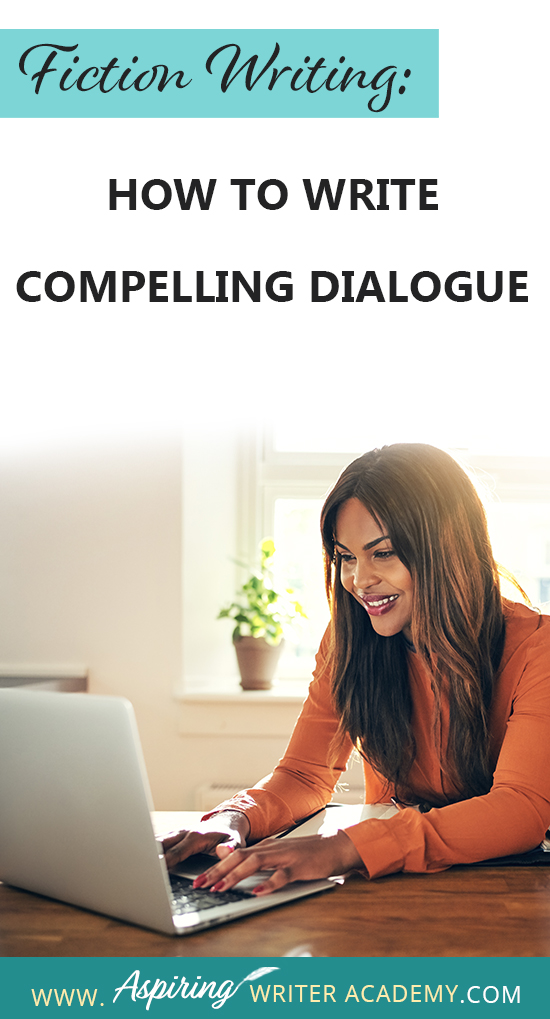Fiction Writing: How to Write Compelling Dialogue
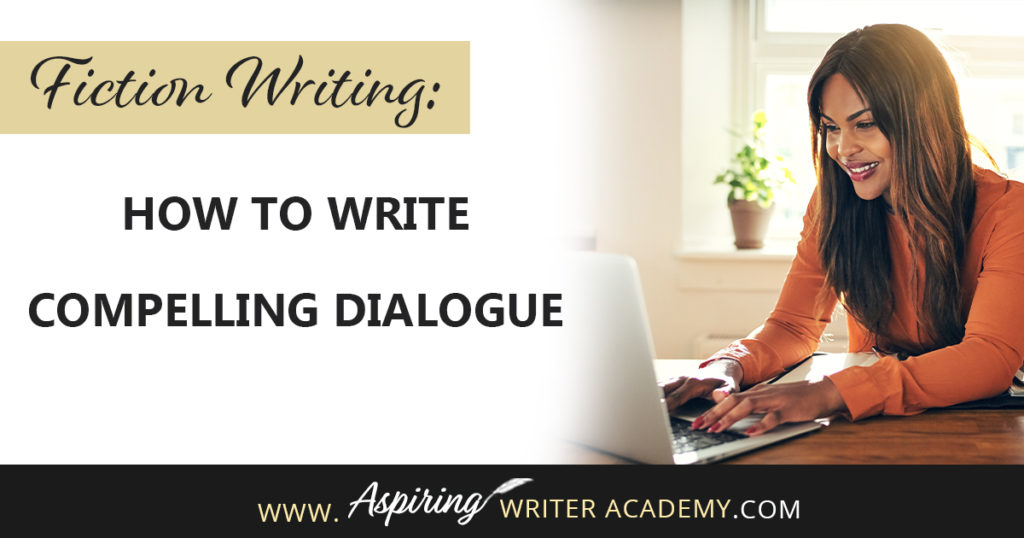
Have you ever read a book where the characters’ dialogue put you to sleep?
If you write fiction, this is not something that you want anyone to say about your stories!
In our post, Fiction Writing: How to Write Compelling Dialogue, we help you create riveting, lively exchanges between your fictional characters so that your book is filled with edge-of-your-seat tension and unexpected surprises for the reader.
In the post below we will discuss:
- The Purpose of the Conversation
- Stimulus & Response
- Character Dynamics
1) What is the Purpose of the Conversation?
If you are familiar with the components of Scene & Sequel, then you know that the POV (point-of-view) character should enter his given scene with a scene goal. What does this character hope to achieve?
Try to avoid having characters engage in idle chit-chat or niceties such as:
“Hello Susan, how are you?”
“I’m fine thank you. How are your wife and the kids?”
“Good. Very good. Thank you. And your husband, Bob?”
“Oh, you know, Bob is the same as he will ever be.”
Now, after reading the above exchange, you must ask yourself - What is the point of all this? Does it serve any purpose at all? Does it relate to the main POV character and his goal that he wants to achieve in this scene?
If the answer is a big, fat, resounding ‘no,’ then you need to cut this section and get right into the heart of what the scene is really about, so you do not bore the reader. Make every sentence in your manuscript matter.
Instead, you might have something more like this for your scene opening:
Joe swung open the door to the café and stormed inside. After one swift glance over the dozen or so occupants, his gaze leveled on a single man with red hair wearing a blue flannel and black vest. “You,” he said, walking toward the guy. “That’s right, you. You’re going to show me where you stashed the money, or I’ll have the sheriff put you behind bars by nightfall.”
In the above scene, is it clear what Joe wants? Obviously, he wants the money. This should also be important to the overall story plot.
Does the scene contain conflict? It will if the red-haired man argues back, tries to stall or weasel his way out of it, or flat-out refuses.
(Yes, you want to fill your scenes with conflict!)
Perhaps the red-haired man handed the money off to someone else and doesn’t know where it is.
What will happen next? Will the two men fight? Before you have the two men fight physically, draw out the scene by first having them fight with words.
Ask yourself, what is the best comeback line this red-haired guy can say to Joe to intensify the scene? In real life, we often do not know what to say in the moment but later wish we had said something more intelligent, witty, or challenging.
This is your chance! Make it count.
What can this red-haired guy say that might surprise Joe…and the reader?
Brainstorm 15 possible comeback lines the opposing character could say to respond. Do not always go with your first idea. Usually the better ideas come later, after your creative mind has had time to turn things around and ‘play.’
2) Stimulus and Response
Whenever you have characters argue, fight, flirt, or try to prove their point, carefully consider how each character’s line of dialogue can play off the next.
If Character A says something about a house, then Character B should say something in response about the house (the topic just stated.) If Character A asks a question, then Character B should answer that question.
Always remember:
Stimulus, then Response
Cause, then Effect
Action, then Reaction
Consider each exchange of dialogue to be a 1-2 punch. First one character speaks, then the other responds to what was just spoken.
The only time you would not have a character respond is if the action was intentional.
Example: A character who might want to avoid a question on purpose might try to redirect the conversation by asking a question of their own or introducing a new topic.
Playful or witty exchanges are called ‘banter.’ There can be banter between family members at the dinner table, banter between friends, or banter between the main characters of a romance. Banter can be used to flirt, prove a point, or challenge another’s point of view.
Example: Excerpt from “The Groom She’d Thought She Left Behind” (part of The Runaway Brides Collection by Darlene Panzera)
(The bride-to-be just stole the reins out of her coachman’s hands and turned the carriage around, heading away from the church.)
After disguising himself as a coachman, he’d decided that if he found Miss Pembrooke’s appearance and demeanor satisfactory, he could change into his wedding clothes at the church. And if he did not…he’d back out of the arrangement.
He just hadn’t expected her to back out first.
“My dear,” he said, his voice suddenly hoarse. “I cannot allow you to do this.”
“I’m not asking for your permission.” She gave him an apologetic look. “Now, if you would be so kind as to jump off…”
“I cannot. Indeed, I fear for your welfare. Especially in your present state of mind.”
“There is nothing wrong with my present state of mind,” she retorted with a scowl. “Either jump off or come with me, but I’m—I’m leaving!”
The notion she’d rather run than marry him gnawed at his ego. She didn’t even know him. And there lay the problem. He’d been so preoccupied with his business accounts, that he had not taken care to abolish the outrageous rumors swirling about the gossip train when he should have.
Crossing over to the seat opposite the one he’d fallen onto, Christian noted the stubborn look of resolve on Miss Pembrooke’s face and asked, “Where will you go?”
“I do not believe that is any of your concern,” she said, her face filled with defiance. “That is my personal business.”
“Seeing how you’ve kidnapped me, it seems I am already involved in your personal business,” he said, unable to contain his perplexity over the entire situation. “And I think I have every right to know—”
“Kidnapped?” she asked, quirking a brow.
“And knocked me unconscious.”
Miss Pembrooke’s eyes widened. “That was unintentional.”
“Nevertheless, a result of your carelessness when you turned the carriage around.”
“I was not careless!” she shot back. “I know how to drive a team of horses. You just were not holding on.”
“How could I?” he demanded. “You stole the reins out of my hands.”
“Yes,” she said, her tone softening. “I did. I suppose I should have entrusted your skills as a coachman.”
“My skills as a coach—” He broke off when he remembered she did not know to whom she was speaking. As far as she was concerned, he was nothing more than a servant.
Miss Pembrooke’s expression grew contrite. “By taking over the reins, I may have endangered your reputation.”
“You’ve endangered more than that,” he countered, thinking of the prestigious investment he would lose if she did not marry him.
“I suppose you could have a concussion.” She narrowed her eyes, appeared to study him, then held up her gloved hand. “How many fingers do you see?”
The fact the beautiful young woman could so stubbornly oppose him, and yet be genuinely concerned for his welfare at the same time soothed his pride enough for his indignation to ebb. “I see two.”
“Thank goodness for that,” Miss Pembrooke declared, and after a moment’s pause, she sighed. “As for where I should go…I do not know. I cannot go back home without a way to contribute to my family’s expenses. I’d be too ashamed. My father had counted on this wedding to get our family out of debt, and by now…he must know I’ve let him down. I cannot afford passage overseas to return to my governess position at my uncle’s estate in England either. No, I suppose I will have to find employment elsewhere, perhaps in a factory.”
He couldn’t help but stare at her. “You, a lady of society, with the Pembrooke name on your side no less, intend to work like a common laborer?”
She nodded so vigorously, her veil slipped off her upswept dark coiffure of curls and fell to her lap. Squeezing the lacy material in her hands like a washrag, she said, “I’ll do whatever it takes to help support my family.”
“Except marry Christian Gould.”
“Yes, anything but that.”
He held her gaze, convinced she knew not what she was in for.
As if she could read his mind, Miss Pembrooke pursed her delicate soft, pink lips and another flair of defiance lit her dark blue eyes. “In fact, if you would be so kind as to drive Mr. Gould’s carriage back to his estate, I’m sure I can manage from here.”
Leave her stranded? “This is ludicrous!” he sputtered. “I can’t just leave you here alone, unprotected with no money and no place to go.”
“I appreciate your chivalry, but I assure you,” she said, giving him a direct look. “I will be fine.”
“No, I cannot—” he protested.
“Why is that?” she asked, lifting her chin. Then her expression softened. “Oh dear. You fear you will be fired, don’t you? And I suppose that would be all my fault.”
Christian stood gaping at her for several long seconds before the absurdity of it all made him grin. “I never intend to work as a coachman again anyway.”
3) Character Dynamics
When writing dialogue, you also need to consider the characters’ individual personalities, background differences, gender & age differences, and cultural differences (speech, customs, accents, regional words, age-related slang.)
- A person from the Middle East will talk differently than someone from the U.K. or Australia.
- A five-year old in kindergarten will speak differently than a 45-year-old corporate CEO.
- Someone who has been hurt in the past may always use defensive language to ‘protect’ in a subconscious effort to protect themselves.
- Others may use strong offensive language to intimidate others and hide their own insecurities.
This is even more important when there are three or more characters in a room speaking to each other at the same time. How do you distinguish each of them so the reader can tell them apart? Look for these little differences. No two people should speak exactly the same.
Also look at the body language beyond the words. What are their physical actions and reactions saying that the character isn’t?
And consider using subtext, the difference between what is being said, and what is meant. What is really going on under the surface?
Character chemistry:
How do the characters in the scene feel about each other? Does one character rub the other character the wrong way? Irritate them with every line of dialogue?
Example:
One character might not even know he is saying something that will set the other character off. However, the other character takes offense because it is all in how he perceives what is being said, instead of what is actually being said. This could be due to something in this second character’s past that causes him to react this way. Perhaps the second character has a low self-image and is always defensive, thinking every word the other character says is an attack on him or an order to do something when the first character is in fact, only making conversation or commenting.
What are the character’s defense mechanisms? Pet peeves? Hot buttons.
What subjects does this character consider off-limits?
Egos:
Does one character have something to prove? Want control? Dominance?
How can you show their relationship through their words and actions? What kind of language will they use?
Are your characters skilled in ‘verbal battle?’ Does one leave after delivering a real ‘zinger’ line to the other? A line that hurts, or cuts deep, or humiliates, or angers? Who wins the dialogue battle in this scene?
Intimacy and Distance:
Do your characters use certain language to distance themselves from others? A man may ask a woman to call him Ned, hoping for more intimacy, but if he offends her, she may wish to put distance between them by calling him once again by his surname, “Mr. Smith.”
An older woman who doesn’t want to be bothered by children or get close to them may refer to a young relative as “the child” instead of using their name.
Additional Tips for Writing Dialogue:
- Keep word choices sharp, specific, focused, visual, and use strong verbs.
- Keep it realistic, but not boring. Limit the number of ‘um….’s’ and pauses that you might hear in real everyday speech.
- Cut repetitiveness. Do not have characters continuously repeat themselves or each other.
- Keep punctuation like periods and question marks inside the end quotes, not outside.
- Show, don’t tell. Do not have your characters say, “I am so angry!” Instead, show their anger through word choice (what they say and how they say it.) “ You’ve really done it this time! Just wait until Father hears about this!”
- Don’t bury the dialogue! Keep your dialogue either to the beginning or the end of a paragraph, but do not ‘bury’ it in the middle. You need to let it stand out to have more impact on the reader. Also, do not place filler tag lines between one character’s question and another character’s answer.
Example of buried dialogue:
Sarah clenched her fists. “How dare you! What were you thinking when you drove my car without asking?” She stomped her foot and let out a snort.
(See how the dialogue is stuck in the middle?)
He shifted his feet, unwilling to meet her gaze. “I didn’t think it was a big deal,” he retorted.
The problem is that the dialogue is buried between the action/body language and speaker tag (‘he retorted’) and doesn’t stand out. Keep the dialogue to one end of the paragraph or the other and be sure to keep most question and answers of dialogue back-to-back without interference.
Better Example:
Sarah clenched her fists, stomped her foot, and let out a snort. “How dare you! What were you thinking when you drove my care without asking?”
“I didn’t think it was a big deal,” he retorted. He shifted his feet, unwilling to meet her gaze.
For even more tips, you may also want to see our post, 12 Quick Tips to Write Dazzling Dialogue.
I hope that you have enjoyed our post, Fiction Writing: How to Write Compelling Dialogue, and that you can apply some of the tips above to your own writing to create dialogue that makes the characters jump off the page and bring the story alive.
If you want additional help crafting your fictional story, you can download our Free Brainstorming Your Story Idea Worksheet -
If you have any questions or would like to leave a comment below, we would love to hear from you!
Do you find it difficult to create compelling antagonists and villains for your stories? Do your villains feel cartoonish and unbelievable? Do they lack motivation or a specific game plan? Discover the secrets to crafting villains that will stick with your readers long after they finish your story, with our How to Create Antagonists & Villains Workbook.
This 32-page instructional workbook is packed with valuable fill-in-the-blank templates and practical advice to help you create memorable and effective antagonists and villains. Whether you're a seasoned writer or just starting out, this workbook will take your writing to the next level.
Our Goal for Aspiring Writer Academy is to help people learn how to write quality fiction, teach them to publish and promote their work, and to give them the necessary tools to pursue a writing career.

ENTER YOUR EMAIL BELOW
TO GET YOUR FREE
"Brainstorming Your Story Idea Worksheet"
7 easy fill-in-the-blank pages,
+ 2 bonus pages filled with additional story examples.
A valuable tool to develop story plots again and again.
Other Blog Posts You May Like
3 Ways to Avoid Writing ‘Episodic’ Scenes in Fiction
Author Chats: Kate Breslin & Book Launch Promotion
Fiction Writing: Office Supplies to Help You Prepare to Write Your Next Novel
How to Write Act I: Opening Scenes for Your Fictional Story
Brainstorming Fiction: What to Do When Your Story Gets “Stuck”
Learn to Plot Fiction Writing Series: Story Analysis of “Beauty and the Beast”
How to Plot Your Fictional Novel (with Free Template Included)
How to Research a Setting for Your Fictional Novel
5 Questions to Create Believable Villains
Why Your Characters Need Story-Worthy Goals
3 Levels of Goal Setting for Fiction Writers
Fiction Writing: How to Write a Back Cover Blurb that Sells
How to Captivate Your Readers with Scene-Ending Hooks
Fiction Writing: How to Name Your Cast of Characters
Scene & Sequel: The Secret to Plotting an Epic Novel
Scene & Sequel: The Secret to Plotting an Epic Novel (Part 2)

is a multi-published author, speaker, and writing coach. She writes sweet contemporary, inspirational, and historical romance and loves teaching aspiring writers how to write quality fiction. Read her inspiring story of how she published her first book and launched a successful writing career.

